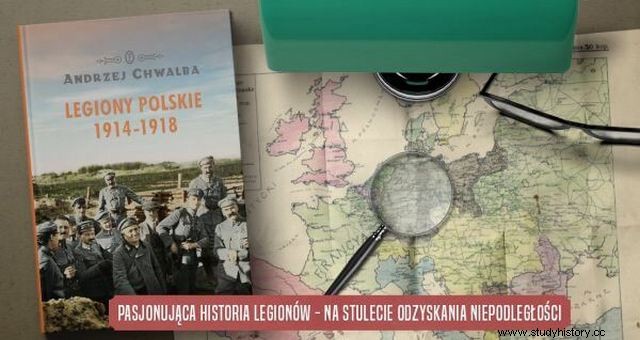Polish legionaries went to war, believing that the conflict between the invaders would help to revive independent Poland. They fought bravely, but the cost of heroism turned out to be enormous. The list of fallen, wounded, missing and taken prisoners grew. Which skirmishes resulted in the greatest losses?
Luck was favorable for Polish legionnaires during the war. But they too soon realized that war is not a romantic adventure, known from the books of Henryk Sienkiewicz. Their ranks slowly began to thin. More comrades-in-arms disappeared - fallen, wounded, missing without a trace, murdered or taken prisoner. The war, at first as joyful as a soldier's song, showed its true face.
Happy beginnings
For future legionnaires, "the first kiss of war" - as commandant Józef Piłsudski called it - it took place on August 12, 1914. That afternoon, three companies of Polish riflemen, which later became part of the Legions, entered Kielce. Euphoria did not greet them, but neither did the shutters slam. There were shots for that.
At around 4 p.m., an automobile with several Russian officers equipped with a machine gun suddenly drove up to the building of the railway station, which the shooters had chosen for their quarters. After a moment of consternation, there was a shooting. The tsarist driver quickly began to retreat, but the lancers of Władysław Belina-Prażmowski and the shooters followed him. They used ... a carriage for the chase. And they won. The car under fire was damaged and the Russian officers were taken prisoner.
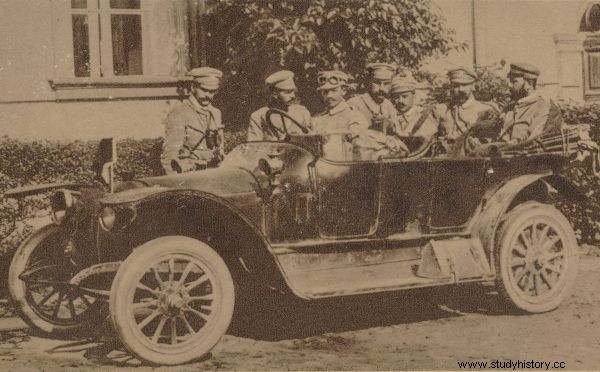
Staff of the 1st Infantry Regiment in Kielce. August 1914.
Despite the initial success, the Russians returned with greater force a day later and the Poles were forced to leave Kielce. It was then that the shooters lost the first of theirs. In addition, the local clergy did not want to bury him. They succumbed only when one of the inhabitants of Kielce threatened to leave the body under the belfry. He warned that "tomorrow the whole city will know how priests are hiding Polish Catholic shooters" .
Death takes its toll
The first real losses were recorded by the legionaries from the 1st Brigade in the fall of 1914. They fought in the foreground of the Ivangorod fortress (now Dęblin). On October 22, near Anielin, and then from October 23 to 26, 1914 near Laski, they fought a sharp fight with the tsarist army. They were shelled by fire from Russian artillery. Even the commander Józef Piłsudski himself was slightly wounded, hit by a shrapnel in the head. He tempted fate himself, often visiting his soldiers on the front lines.
Another bloody clash took place near Olkusz near Krzywopłoty. Two infantry battalions and legionary artillery clashed with the Russians there. From November 16 to 19, 1914, the battlefield changed hands. The legionnaires suffered heavy losses, amounting to a third of the initial states. Not everyone was favored by such luck as Kazimierz Herwin-Piątkowo, who came out without a scratch, although the Russian machine gun fired almost his entire company. "The bullet got them all, I was left alive. I was just ashamed to be all over this hell ” , he recalled later.
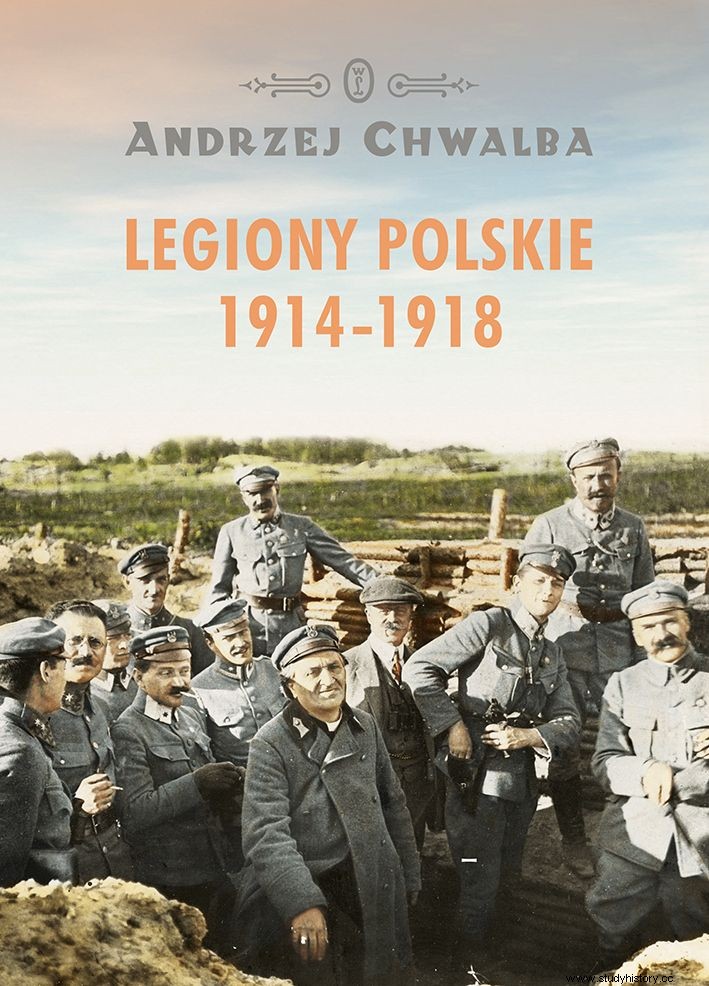
46 legionnaires died in the battle, including the engineer Stanisław Paderewski, the half-brother of the pianist Ignacy Jan. 131 were wounded or taken prisoner. No wonder that Józef Piłsudski called the battle "Thermopylae legionary legions" .
Bloody Christmas Eve
Although the war in December 1914 was in full swing, Christmas was going to be calm for the legionnaires from the 1st Brigade. They were getting ready for pleasant moments of rest in the liberated Nowy Sącz. Unfortunately, an emergency order sent them to patch the front line near Łowczówek near Tarnów. Lieutenant-colonel Kazimierz Sosnkowski led them into battle. Józef Piłsudski previously left for political talks in Vienna.
So Polish soldiers spent the holidays in battle. And not just what. From December 22 to 25, they not only captured the hill above the village, blocking the progress of the Russians, but also repelled as many as 16 assaults by the tsarist troops. They persevered even when the enemy's pressure could not withstand the Imperial-Royal troops. Moreover, the legionnaires did not have the best opinion of them. "More and more often the legionnaires spoke of the Imperial-Royal troops" black and yellow old men "" - says Andrzej Chwalba in the book "Polish Legions 1914-1918" .
After the battle near Łowczówek, the 1st Brigade received many honors, but the list of losses was also serious. 128 soldiers were killed and missing. 342 were injured, including as many as 38 officers! As Piłsudski wrote, "for the honor of belonging to our soldier's circle one has to pay copiously with blood" ...
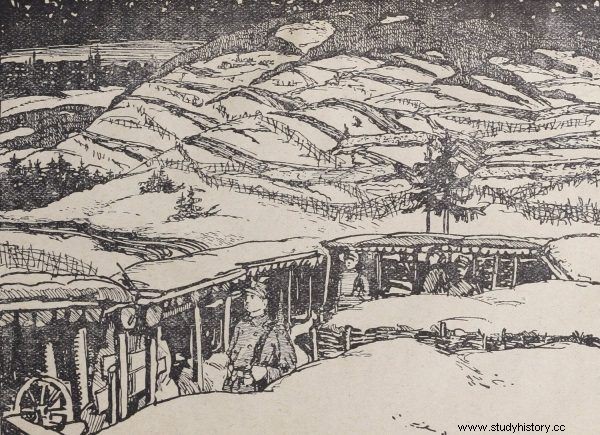
Legionnaires in positions near Łowczówek.
They were not the only victims of the clashes near Tarnów. During the battle, Stanisław Król-Kaszubski from Warsaw was taken prisoner. As a tsarist subject, he was hanged on February 7, 1915 in Pilzno near Tarnów for treason. “There were more cases of shooting prisoners of war legionnaires. As a rule, they were treated as traitors " - comments Andrzej Chwalba in the book "Polish Legions 1914-1918", He also adds that the Russians killed the wounded and murdered prisoners. Often very brutal, as evidenced by the description provided by the legionnaire Wacław Lipiński:
In the ruins was the body of a shooter who had been taken by the Muscovites two days ago. He had a shattered skull, twenty bullets in his chest, a ripped abdomen, erupted genitals and a bayonet pierced face .
A hot winter in the frosty Carpathians
The legionnaires from the 2nd Brigade had an equally difficult combat route. Initially, they thought that, like their colleagues from the 1st Brigade, they would end up on Polish soil. Meanwhile, they were taken by trains to Hungary and sent to the mountains. The winter was harsh, and the soldiers not only had insufficient military training, but also could not cope with the difficult conditions.
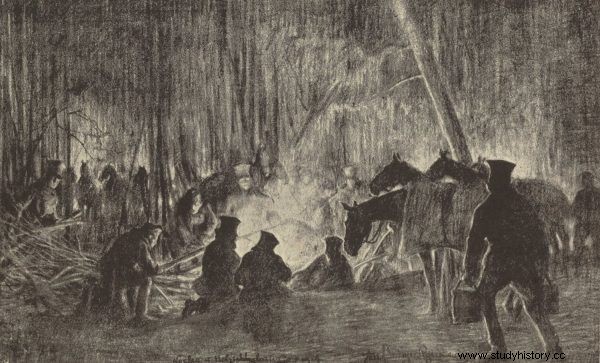
The soldiers of the 2nd Brigade faced difficult conditions and bloody fights with the Russians in the Carpathians. The illustration shows a drawing by Józef Ryszkiewicz showing the night of the legionnaires.
For several months, frost, deep snow and severe mountain terrain made it difficult for Poles to provide supplies, evacuate the wounded, and with time to fight. The effects were dire. In March 1915, when the legionnaires were withdrawn for rest, it turned out that out of 8,000 soldiers who had set off from Krakow six months earlier, only 680 were able to fight.
The bloodiest military clash of the 2nd Brigade took place on October 29, 1914, when the Russians attacked Polish troops near Mołotków in the present-day Ukrainian Pokut. The legionnaires did not have machine guns, and the nearby units of the former army did not support them either. After a longer fight, the only success was successfully avoiding the lap. The battle turned out to be extremely bloody. Almost 200 Polish soldiers were killed or missing, 480 were wounded and 200 were taken prisoner.
A hell concert
Soon after, after the breakthrough of the Russian front as a result of the attack of German and Austro-Hungarian forces near Gorlice at the beginning of May 1915, the 1st Brigade joined the fight again. On May 16, she began one of her most difficult battles. This time it took place near Sandomierz, near Konary near Klimontów. The clashes in this area lasted a week. A particularly fierce battle was for a small cane.
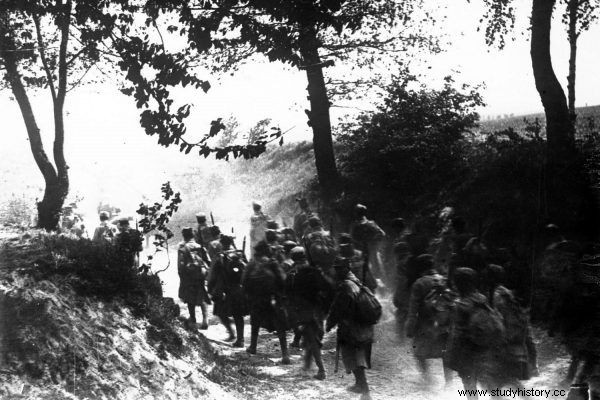
Legionnaires at Konary. May 1915.
Among others, Marian Kukiel took part in the fighting. "The fire of the Russian artillery and infantry is more and more violent, around 4 it turns into a storm that the oldest soldiers did not remember. The roar of cracking grenades, the crackle of broken trees, the whistle of bullets, the croaking of thousands of crows combine into a hellish concert "- he recalled.
From the ranks there were 140 dead and over 500 wounded and missing. Captain Kazimierz Herwin-Piątek, the one who was so lucky at Krzywopłoty, was killed, among others.
Bloody Volhynia
But the legionnaires faced even more intense and bloody battles. Still in 1915, they took part in the fighting in Volhynia. As Andrzej Chwalba writes, “the losses of the Legions in the Volhynia campaign were very serious. Some platoons did indeed cease to exist , part of the company was reduced to platoon size and the battalions to company size. ”

This time, all three brigades were allowed to fight together in one segment of the front. The fights with the Russian army began at the beginning of November 1915 near Kostiuchnówka.
The battle took the Legions extremely painful losses. In the attack ordered by the Legions Headquarters, more than 60 soldiers were killed and a hundred and several dozen were wounded. For many of them, help came too late - they did not receive it until dusk, when they were dragged to the rear. Overall, nearly 50% of the attackers died or were injured . Polish determination, however, won the recognition of posterity. In recognition of her, the hill, which was the site of the toughest fights, was called the Polish Mountain on military maps. Nearby are also marked Polish Lasek and Polish Bridge.
The decimation of Polish soldiers during the battle was also caused, unfortunately, by the mistakes of the Legion Command, which Józef Piłsudski described as less caressingly as "a bastard". It ordered an attack on a heavily manned hill without the support of artillery. The Russians, seeing this, allowed the legionnaires at a short distance and started firing machine guns.
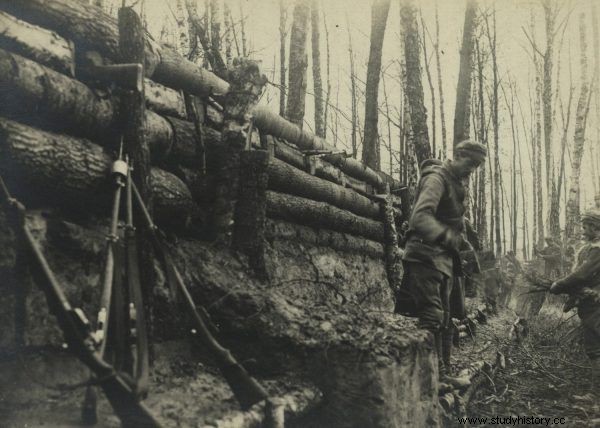
Legionnaires in the trenches near Kostiuchnówka.
It was not the only clash of legionnaires in this area. After several months of positional fights, in July 1916, Kostiuchnowka again became a battlefield. This time the Russians were attacking. They started the assault with hurricane artillery fire with heavy artillery. This is how legionnaire Wacław Lipiński remembered him:
At times, when the fumes were lower (...) The Polish Mountain disappeared completely. In the heavy dust, tongues of fire flashed only once, and the smoke dragged heavy, gray, gray ... The air becomes heavy, stinking, the smoke burns into the chest acrid, sharp, irritating, eyes stop seeing, ears hear .
"Nobody quit ..."
The impetus of the attacking tsarist troops was enormous. No one seemed to have escaped from him alive. As he writes in the book "Polish Legions 1914-1918" Andrzej Chwalba:
Austro-Hungarian troops retreating from adjacent sectors reported that the legionaries were knocked down because no one withdrew. The truth was different, although they suffered very large losses in the killed and wounded, there were even cases of severe combat stress, which led experienced front soldiers to madness and mental illness .
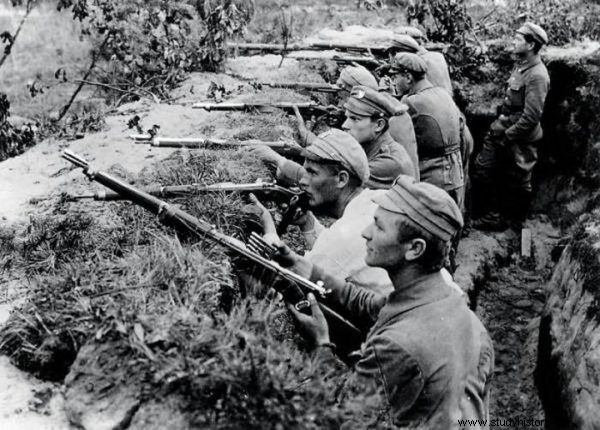
Hurried uhlans during the fights at Kostiuchnówka.
On July 5, the Russians attacked again. The legionnaires defended themselves and even counterattacked, but the Austrians withdrew from their wings. In this situation, endangered by the environment, Poles were also ordered to withdraw. Undoubtedly, they kept the field for their opponent in the fighting. They did not lose a single cannon, as Józef Piłsudski proudly emphasized. Their ranks, however, left as many as 2,000 killed, wounded and missing.
It was the last of the great and bloody battles of Polish legionnaires. In July 1917, some Polish soldiers, especially from the 1st and 3rd Brigades, refused to swear allegiance to the German Emperor and were interned. Only the 2nd Brigade remained at the front. Soon after, the situation on the Eastern Front actually calmed down.
During World War I, 25-30 thousand people passed through the Legions, although at one time their number never exceeded 20 thousand people under arms. They began their war epic as allies of Austria-Hungary and Germany and ended up as prisoners of both countries. Some were sent to the Italian front. How many died? It can be estimated that the total legion losses amounted to several thousand killed, wounded and captured. And the survivors also did not lay down their arms. After all, many former legionnaires later took part in the battles for the borders of the reborn Republic of Poland and in the Polish-Bolshevik war.
Buy a book with a discount on Empik's website:
